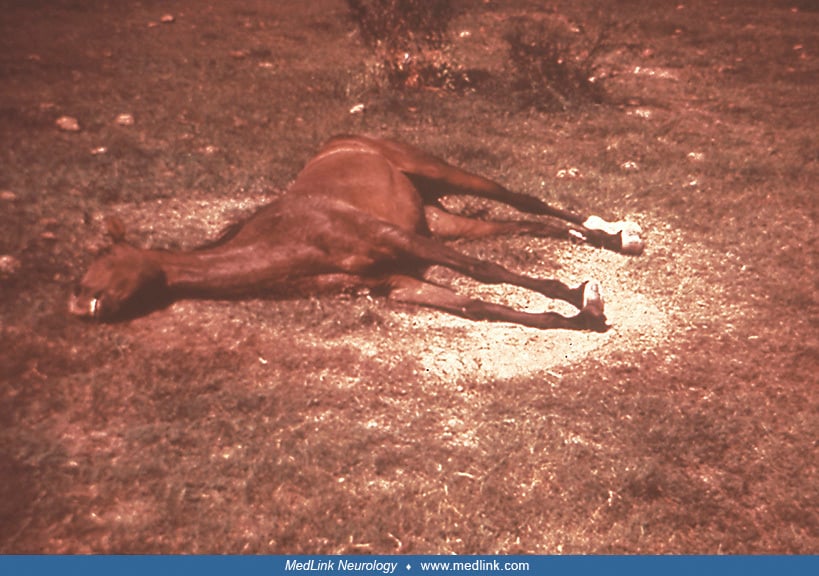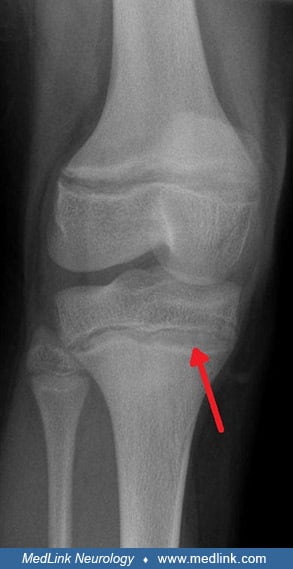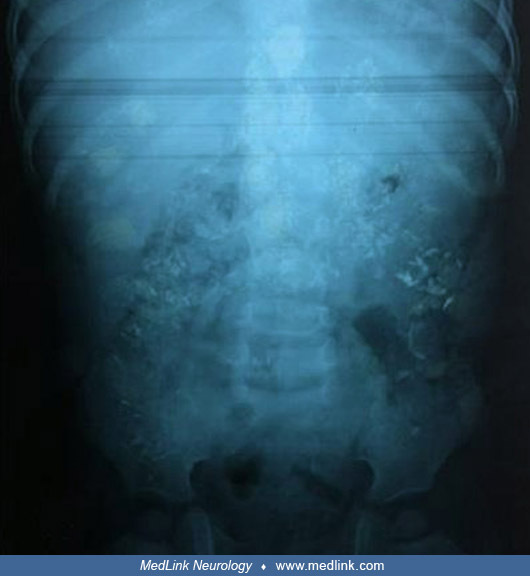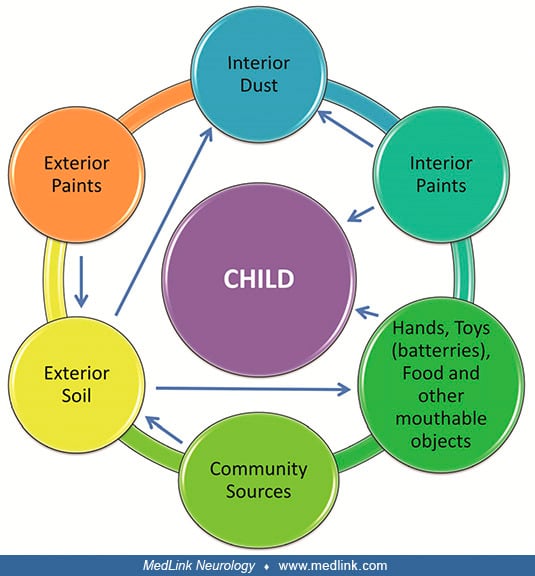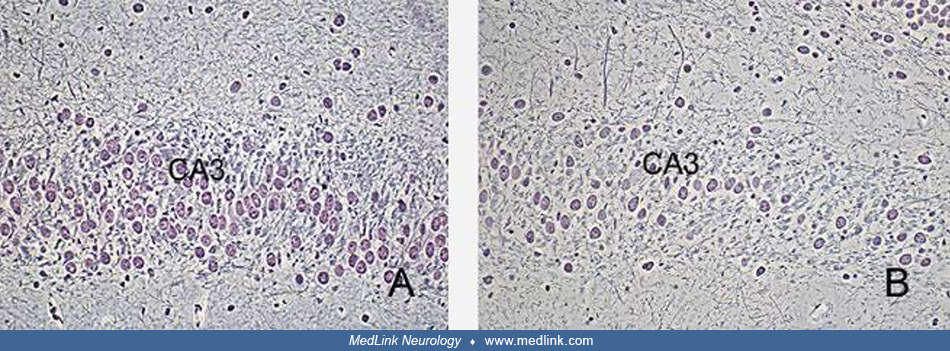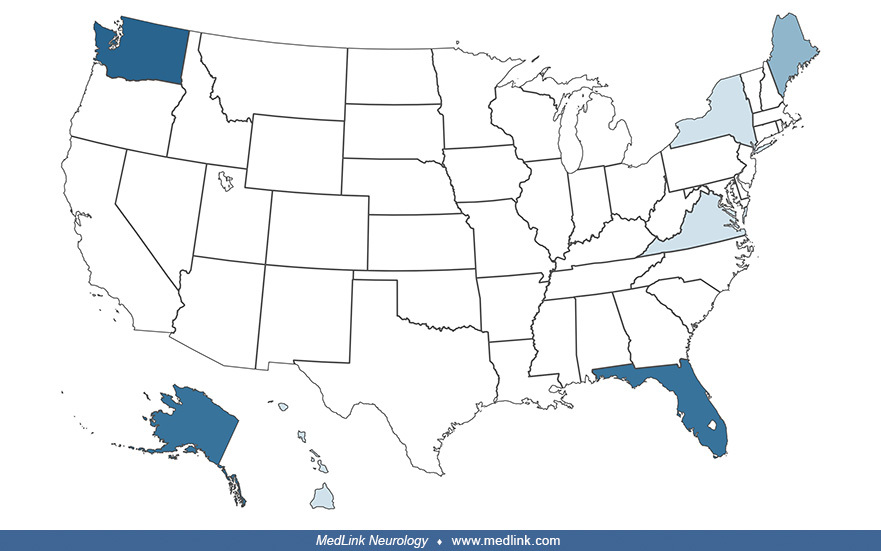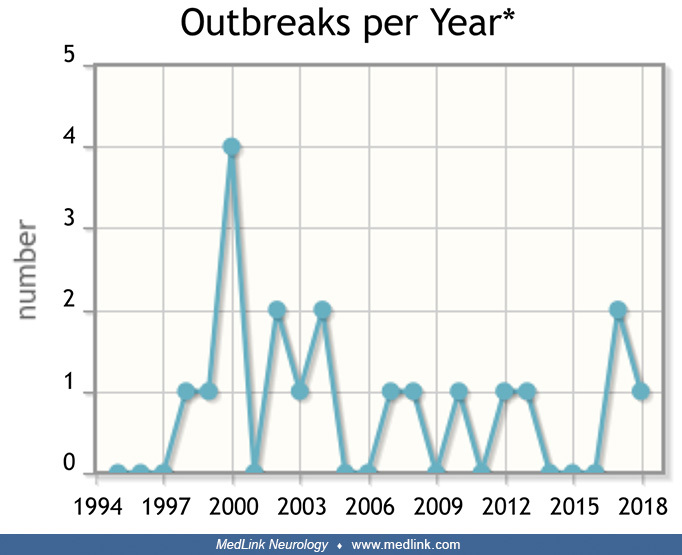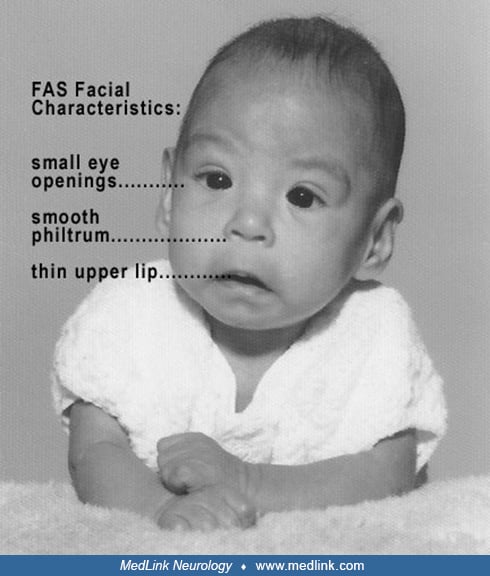- Clinical Categories
Neurotoxicology
-

Media
Hyperintense signal change of the mammary bodies and periaqueductal gray matter in Wernicke encephalopathy
Axial section of cerebral MRI FLAIR sequence showing hyperintense signal change of the mammary bodies and periaqueductal gray matter in a 66-year-old man with Wernicke encephalopathy complicating prolonged parenteral nutrition. (Source: Slim S, Ayed K, Triki W, et al. Gayet-Wernicke's encephalopathy complicating prolonged parenteral nutrition in patient treated for colonic cancer - a case report. BMC Nutr 2022;8[1]:83. Creative Commons Attribution 4.0 International [CC BY 4.0] license, creativecommons.org/licenses/by/4.0. Image cropped from original.)
-

Media
Scheme of complexes of the Pt(NH3)2(OH)+ moiety of carboplatin with the B vitamins
Scheme of complexes of the Pt(NH3)2(OH)+ moiety of carboplatin with the B vitamins, including vitamin B6 (pyridoxine, or its active form pyridoxal 5'-phosphate). The only vitamin with a positive charge is thiamine (vitamin B1). Note that the chemical symbol of platinum is Pt. (Source: Szefler B, Czeleń P, Krawczyk P. The affinity of carboplatin to B-vitamins and nucleobases. Int J Mol Sci 2021;22[7]:3634. Creative Commons Attribution License [CC BY], creativecommons.org/licenses/by/4.0.)
-

Media
Members of the Conference on Disarmament
Derivative work by User:NerdyNSK on September 13, 2008. Blank map by Users: Roke, Dbachmann, Hoshie, Wiz9999, Tene, Cp6, Nightstallion, NerdyNSK. (Courtesy of Wikimedia Commons. Creative Commons Attribution 3.0 Unported [CC BY 3.0] license, creativecommons.org/licenses/by/3.0. Modified and edited by Dr. Douglas J Lanska.)









































































































































































































































































































































































































































































































